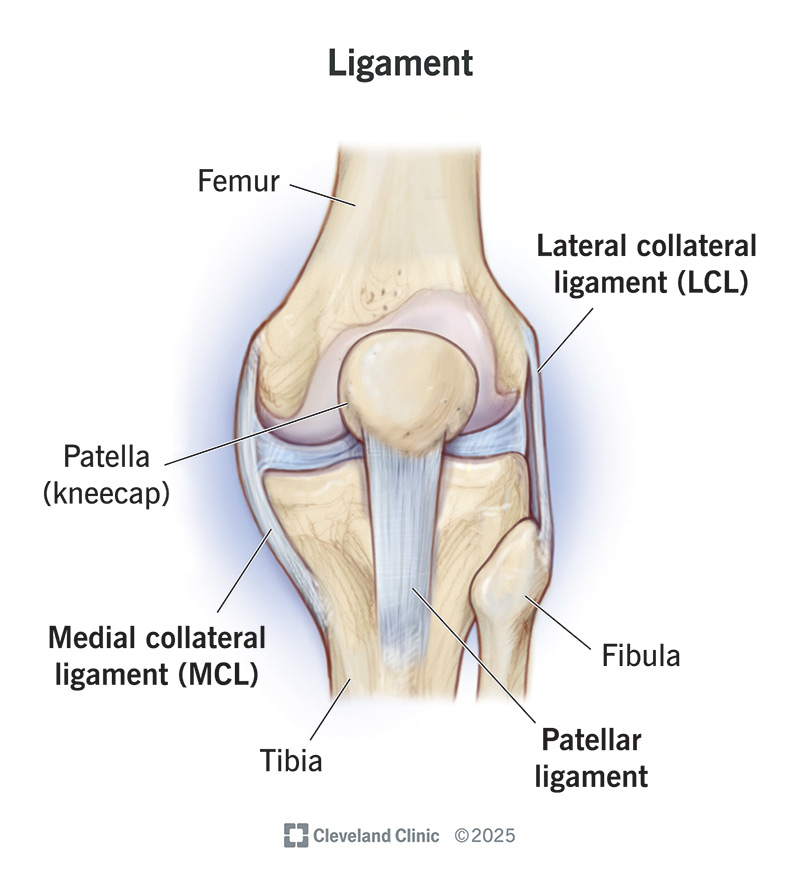Ligaments are connective tissues that join bones to other bones. There are over 900 ligaments in your body. A sprain is a common injury that happens when you overstretch or tear a ligament. Most ligament injuries are accidents, but exercise can help keep your ligaments strong and less prone to injury.
Advertisement
Cleveland Clinic is a non-profit academic medical center. Advertising on our site helps support our mission. We do not endorse non-Cleveland Clinic products or services. Policy

Ligaments are tough, fibrous bands of connective tissue in your body. They connect bones to other bones and help hold important body structures in place, including joints and some organs. These cord-like tissues are mostly composed of collagen and elastin, which makes them strong but flexible.
Advertisement
Cleveland Clinic is a non-profit academic medical center. Advertising on our site helps support our mission. We do not endorse non-Cleveland Clinic products or services. Policy
Ligaments hold bones and other body parts together in a way that allows for a limited amount of movement. They give a little, but also prevent parts from moving too much or moving the wrong way.
They:
There are more than 900 ligaments in your body. Many of them are in your limbs, especially in your articulating joints. Some connect muscles to bones and support large organs in your abdominal cavity.
Some of your important ligaments include your:
Advertisement
Ligaments come in different shapes and sizes. Most look like ropes, cords or bands. Some are thin, like string, while others are wider. Some are even shaped in an arch. They can be pink, yellow or white.
Ligament parts include:
You can sprain a ligament by pulling it too hard or forcing it to move in the wrong direction. This stretches or tears the ligament fibers apart. Sprains often happen during a sudden fall, twist or impact.
Some common ligament injuries include:
As you age, your ligaments can start to weaken and become more likely to be injured. You can help keep your ligaments healthy and strong by getting some regular exercise and avoiding sitting too much. Don’t forget to warm up and stretch before exercising. Make sure to ease up when you feel pain or strain.
Eating certain nutrients can also help nourish your ligaments, including:
Ligaments are tough, but when they tear, they can take a long time to heal. Afterward, they’re never quite as strong as before. A sprain can leave your joint unstable and more prone to sprain again. You’ll need to take extra care to protect it from further injury in the future, especially if you’re an athlete.
If you think you may have pulled a ligament, call a healthcare provider. They’ll assess the injury and make a plan to support the healing process. Some tears might need surgery, while others might need weeks or months of rest to heal. After that, physical therapy can help rehabilitate your ligament.
Advertisement
From sudden injuries to chronic conditions, Cleveland Clinic’s orthopaedic providers can guide you through testing, treatment and beyond.

Last reviewed on 03/30/2025.
Learn more about the Health Library and our editorial process.